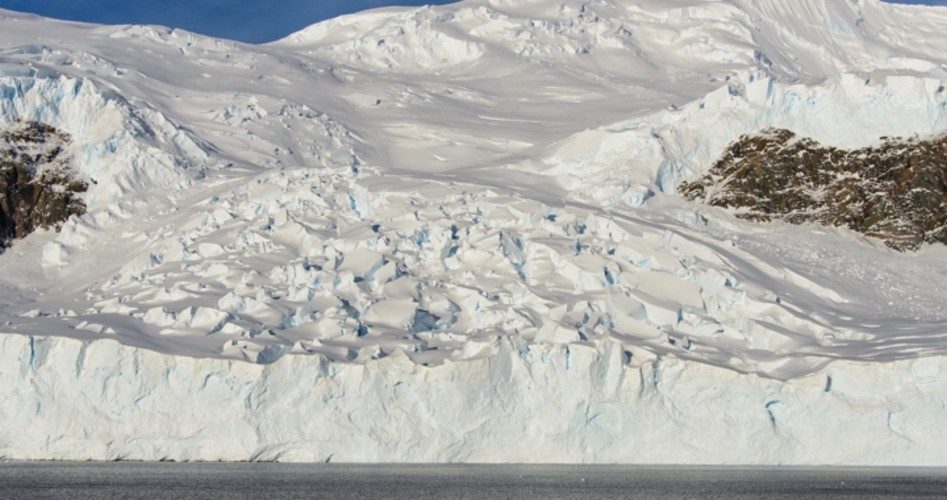
Antarctica, considered by many climate alarmists to be a harbinger of future climate conditions for the rest of the globe, apparently is not warming as fast as the doomsayers thought. In fact, it may not be warming at all, with data suggesting that the continent was much warmer than it is now a century ago.
The Japanese Meteorological Agency’s research outpost, Showa Station in Antarctica’s Queen Maud Land, reports a slight cooling trend, even as atmospheric CO2 levels rose sharply from 1985 until 2017, according to Japanese climate blogger Kirye. But lest you think this is some sort of Japanese climate denial scheme, there are other examples.
The Australian research outpost Davis Station also reports no warming trend in six decades. Scientist Andy Oz tweeted, “Australia’s Antarctic bases have no trend in temperatures over past 60 years.”
In a study of 13 stations from all over the continent, 10 of the stations show no trend of temperature increase and some show a slight decreasing temperature trend. Three of the stations, all of them located on the Antarctic Peninsula, show a slight warming trend. Besides the raw data listed above, two recent scientific studies confirm these observations.
Karen L. Smith and Lorenzo Polvani’s 2016 study examined the warming trend on the Antarctic Peninsula and concluded that “there is little evidence of anthropogenic SAM-induced driving of the recent temperature trends. These results offer new, compelling evidence pointing to natural climate variability as a key contributor to the recent warming of West Antarctica and of the Peninsula.”
Another study, led by John Turner of the British Antarctic Survey, concludes that natural factors such as wind and circulation changes are the primary reason for temperature variability in Antarctica. From the study: “Temperatures have decreased as a consequence of a greater frequency of cold, east-to-southeasterly winds, resulting from more cyclonic conditions in the Northern Weddell Sea associated with a strengthening mid-latitude jet.”
And claims that the Antarctic has never been warmer than it is today also appear to be false. And we’re not talking about going back to the Jurassic Period. This study by Ryan Fogt and Megan Jones of the Department of Geography and Scalia Laboratory for Atmospheric Analysis at Ohio University notes that much of the continent’s temperature was exceptionally high during the Amundsen and Scott expeditions of 1911/12.
From the study: “Amundsen and his crew experienced temperatures that peaked above negative 16 degrees C on the Polar Plateau on 6 December 1911, which is extremely warm for this region…. Scott also encountered unusually warm conditions at this time.” The current average summer temperature for the Polar Plateau at the South Pole -28.2°C.
So, the Antarctic temperature variations appear to be natural. That’s all well and good, but what about the ice shelves falling into the ocean that the continent is so well-known for? Didn’t a piece the size of Delaware break off last year? Why?
In July of last year, amateur climatologist Al Gore breathlessly tweeted that “The Larsen C ice shelf has broken away from Antarctica, a jarring reminder of why we must solve the climate crisis.” While the carbon-credit salesman was correct about the event, he was completely wrong about the cause. A decades long rift, observed as early as the 1980’s, was likely the cause of the break.
In fact, the ice on the majority of Larsen C has been thickening. Also, the break-off of Larsen C will not have any impact on sea levels, since the portion of ice that broke off was already afloat, therefore, it is only displacing itself. Miami Beach is safe for now.
Swansea University glaciologist Adrian Luckman was surprised by all the fuss. “We’ve been surprised by the level of interest in what may simply be a rare but natural occurrence,” Luckman wrote. “Because, despite the media and public fascination, the Larsen C rift and iceberg ‘calving’ is not a warning of imminent sea-level rise, and any link to climate change is far from straightforward.”
The study of the Antarctic and its sister cold region the Arctic is fascinating, especially for Antarctica with its large land mass completely covered in ice. It makes one wonder what is beneath all of that ice. But, unfortunately for global-warming advocates, that darn ice continent and its penguin inhabitants will just not cooperate with climate alarmists’ agenda.
Image: Alexey_Seafarer via iStock / Getty Images Plus




